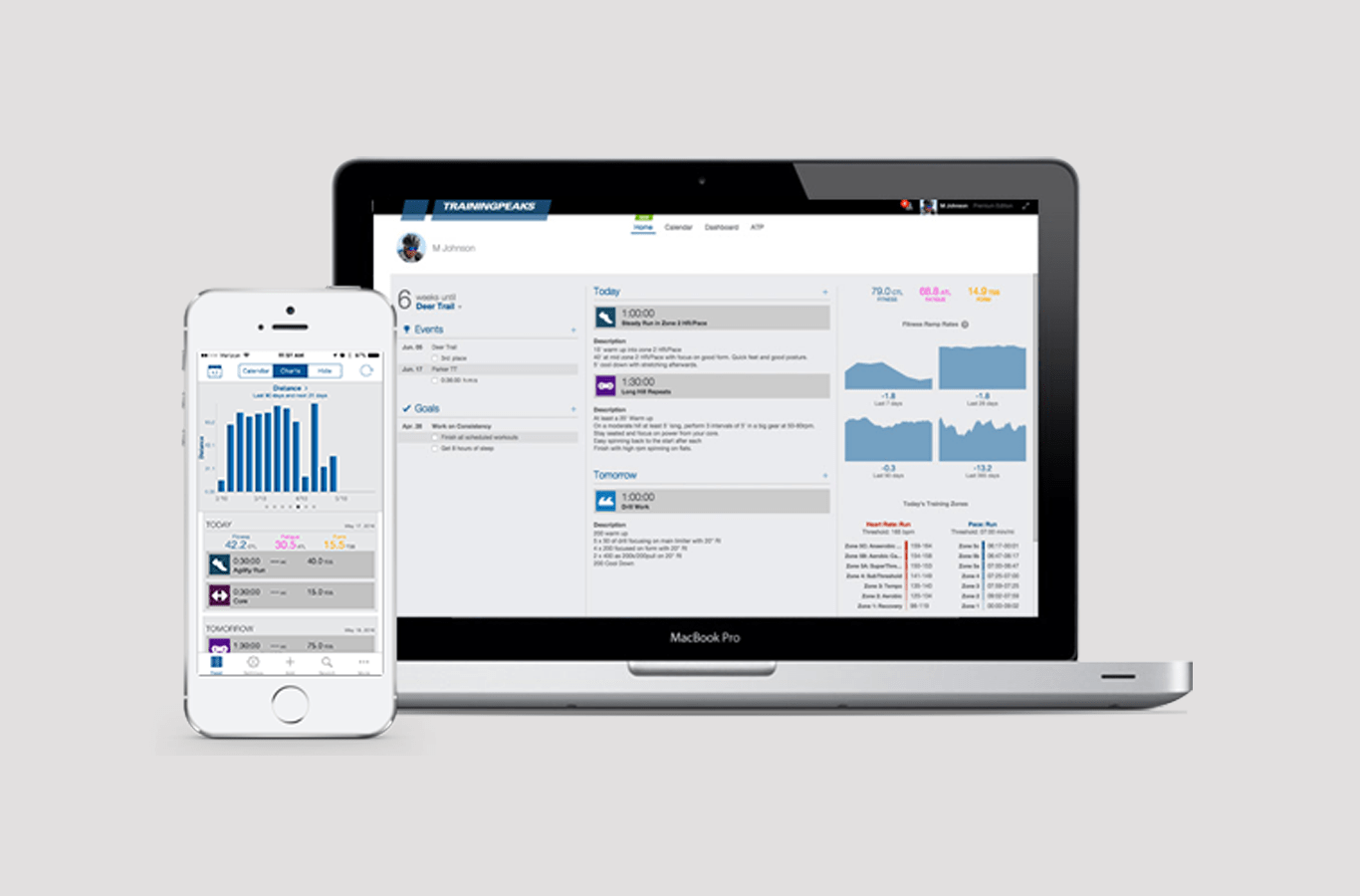Dieser Beitrag ist auch verfügbar auf: Deutsch
Garmin Connect, Movescount, Strava, Runalyze… Actually my training data is already spread over too many portals. Curiosity has driven me to the largest American portal: TrainingPeaks. Here are the reasons and first experiences.
Inhalt / Content
TrainingPeaks
TrainingPeaks is a manufacturer-independent portal for the documentation and evaluation of endurance sports. Its roots seem to lie more in cycling and triathlon, but runners are clearly one of the major target groups.
In contrast to Strava or Runalyze, TrainingPeaks also offers planning of future training sessions – including comfortable annual and competition planning. Its strengths lie in the system of metrics and calculated parameters, which can be taken to the extreme by further processing in WKO.
The platform automatically synchronizes itself with all major manufacturer portals and also imports a variety of other information from providers such as MyFitnessPal or Withings.
Background
History
TrainingPeaks is based on the experience of Joe Friel and his son Dirk as trainers. In the late 90s they were seeking a way to better support their athletes and relied on the then emerging Internet as a platform. TrainingPeaks was then probably the first online training diary in the world.
The portal was designed to make the work of coaches easier and to support a large number of athletes. So even today there is still an athlete and a coach edition of the professional tool.
With WKO+ they developed a desktop software for detailed analysis of the training data – significantly accompanied by Hunter Allen and Dr. Andy Coggan. Thus, the entire “TrainingPeaks” system naturally contains the procedures, metrics and preferences of the three gentlemen. Apart from that, however, the platform can be used by all athletes and coaches regardless of their training philosophy.
Basic or Premium?
TrainingPeaks can be used free of charge with its basic functions. You can record your training via web, app or via sync from the manufacturer portals, track your equipment and work with a trainer. This certainly includes the use of the (paid) training plans that are offered online.
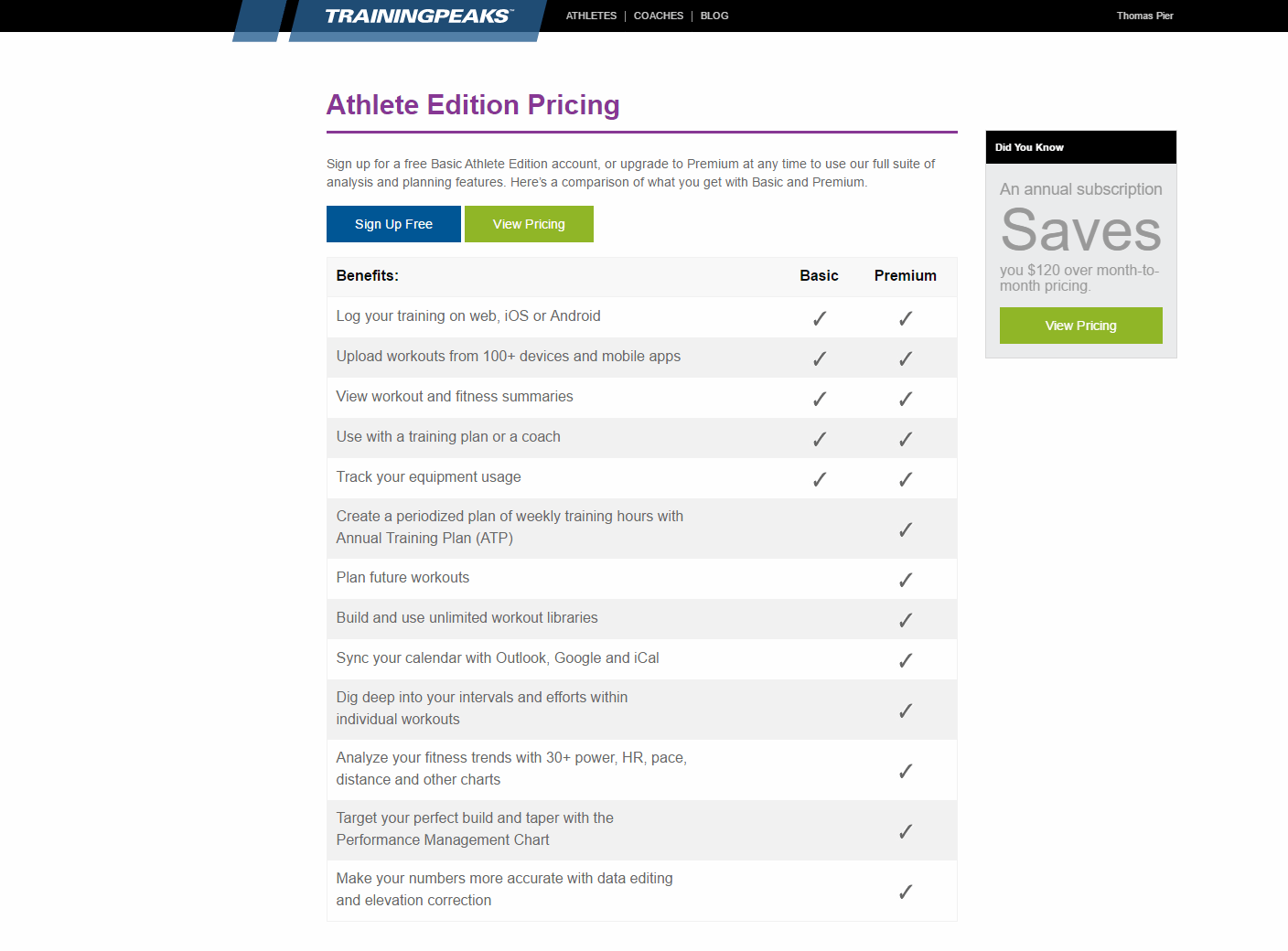
In addition to the Basic version, there is also the (paid) Premium version. As a new user, you will of course be given this for a period of time to get to know the full range of functions. After one week (!), however, these will be dropped for Basic users.
Premium customers get significantly more tools for evaluation and planning of the training. You can plan future training sessions and manage your complete training year or periodize it individually. Training sessions can be stored in a library or used from a pre-defined library. The created plan is then also synchronized with Outlook, Google Calendar or iCal.
If you really want to use TrainingsPeaks, you can’t get around the paid version. This is not really cheap – unless you commit for at least a year. Then you “only” pay 119 dollars per year or about 9.90 dollars per month. With a monthly subscription it is twice as much.
I chose the golden mean and paid for half a year. You will need more than a few weeks of experience to really judge the usefulness of the offer.
Features
Training log (Basic)
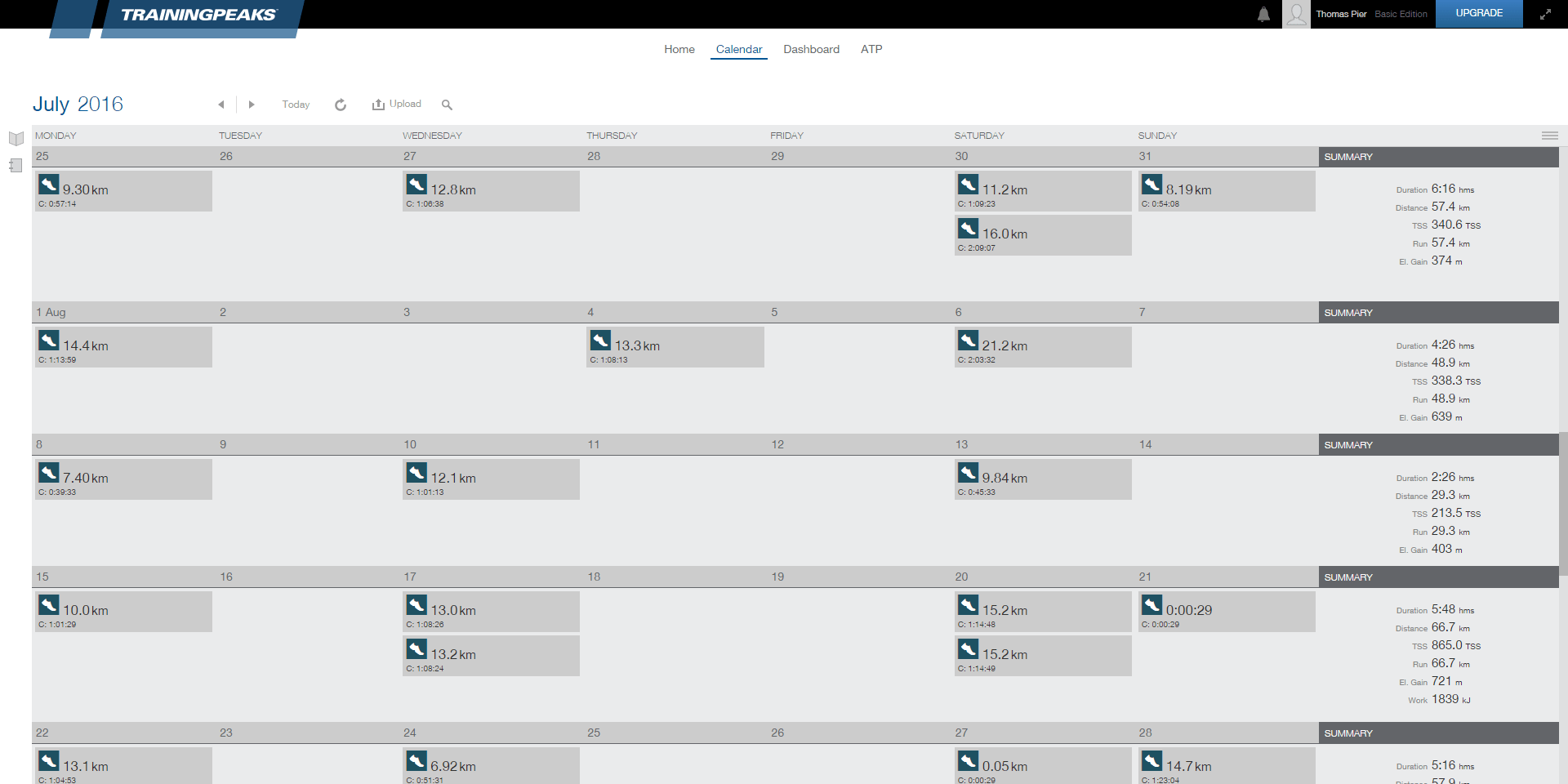
TrainingPeaks is a digital training diary. The platform therefore offers the possibility to create entries for a variety of sports and thus to keep a record of them. Workouts can be entered manually or synchronized automatically between all major manufacturer portals. I am currently doing this with Garmin and Suunto, for example, and it works really well.
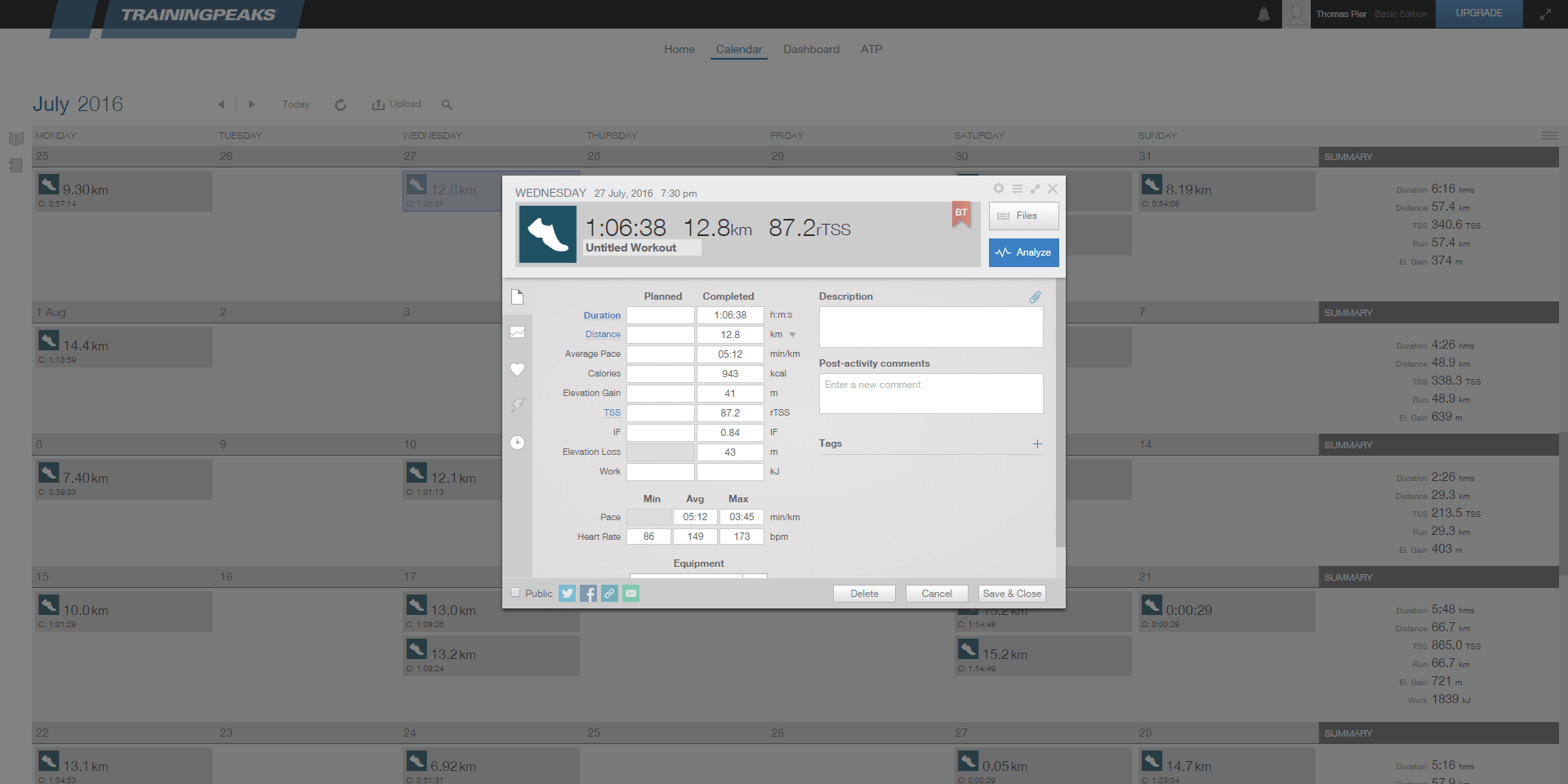
In addition to the recorded and calculated data (more on this later), TrainingPeaks also manages the equipment used. At least rudimentarily… because more than running shoes or (racing) bikes is not offered here. And the whole thing is not very easily accessible either. Probably not a core feature of the software ;)
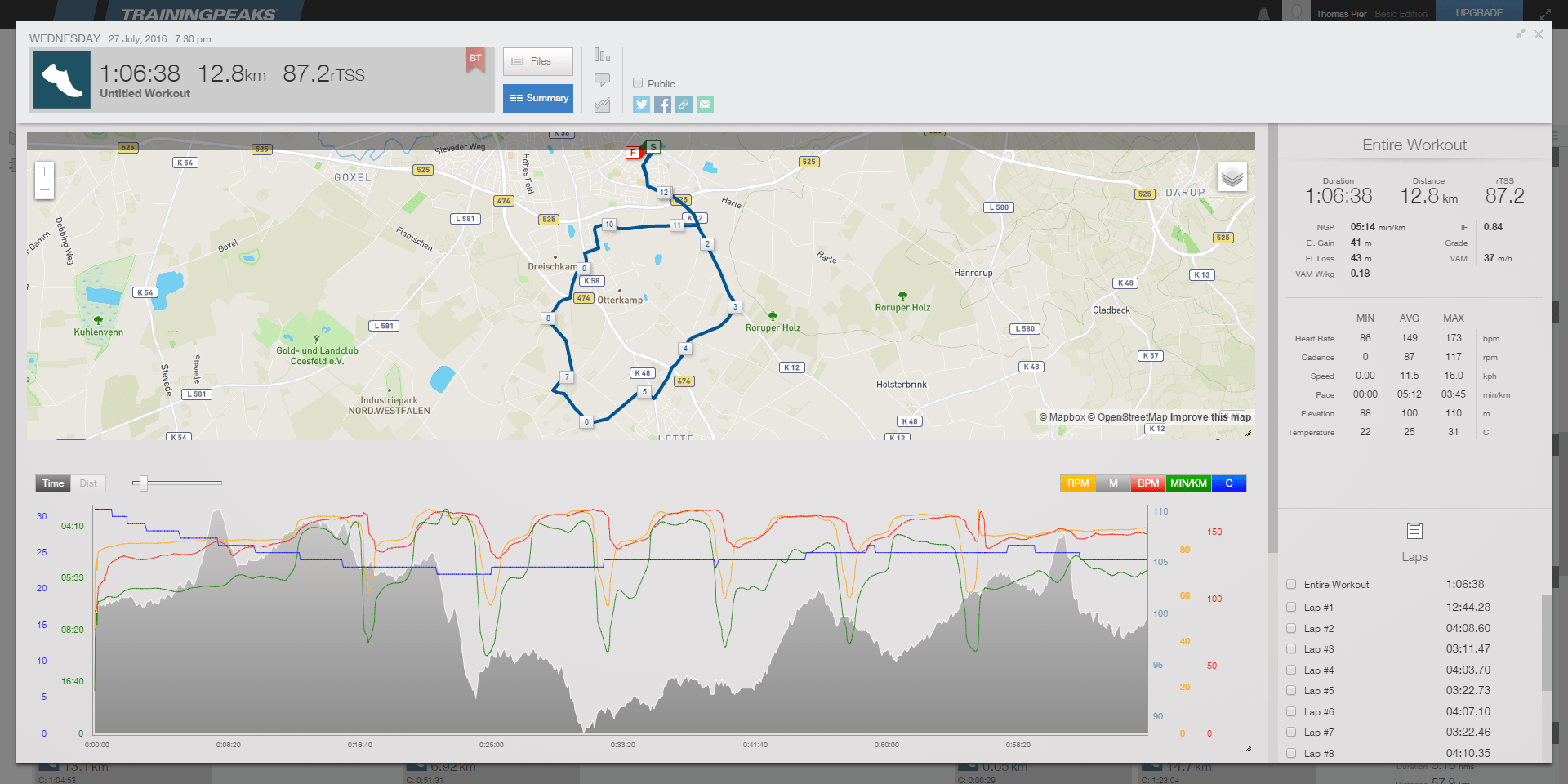
On the other hand, you get your workout data displayed very nicely prepared. Of course, map and curves are interlocked in such a way that the mouse position in the timeline is also shown on the map – and vice versa. This way, conspicuous points in the curve can be traced directly on the map.

The data management is also well solved. One has access to the underlying file that provides the data at any time. By its name, you can also see from which platform it was synchronized. If, for example, there are several competing records for a run, this file can also be exchanged here and the data recalculated. It is also possible to merge several files, which were created one after the other, into one run session.
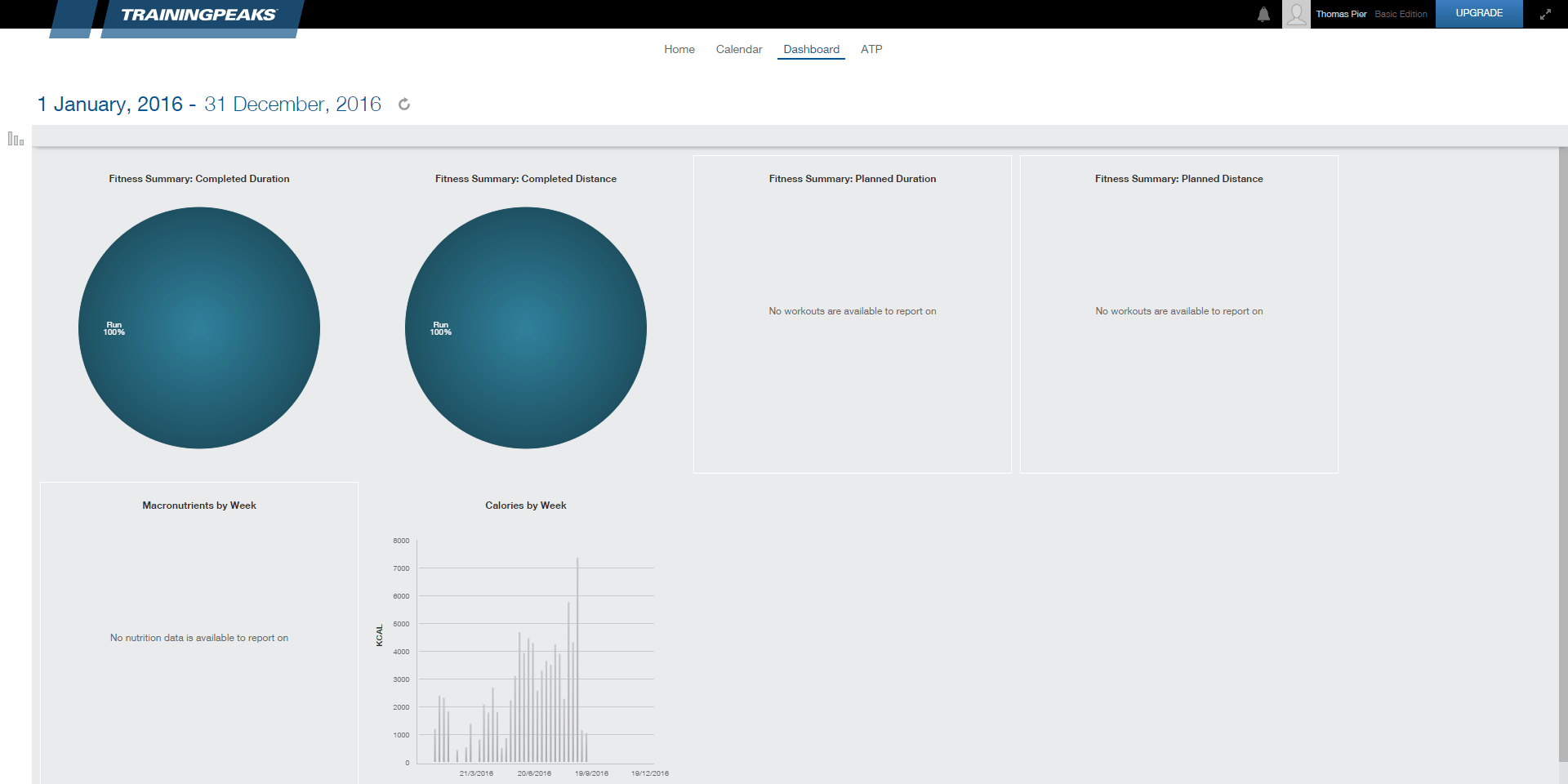
In the free Basic-Edition there are only very few evaluations displayed in the dashboard. Basically you can completely ignore that part if you are not a paying customer. I don’t find the reports very helpful at all… :( But the free version seems to be more for runners who want to share their training logs with a trainer who also uses TrainingPeaks. The trainer then has all possibilities to make special evaluations and use them as a basis for further training recommendations.
In my opinion, the Basic Edition makes no sense without a trainer – except during the one-week trial period.
Training planning (Premium)
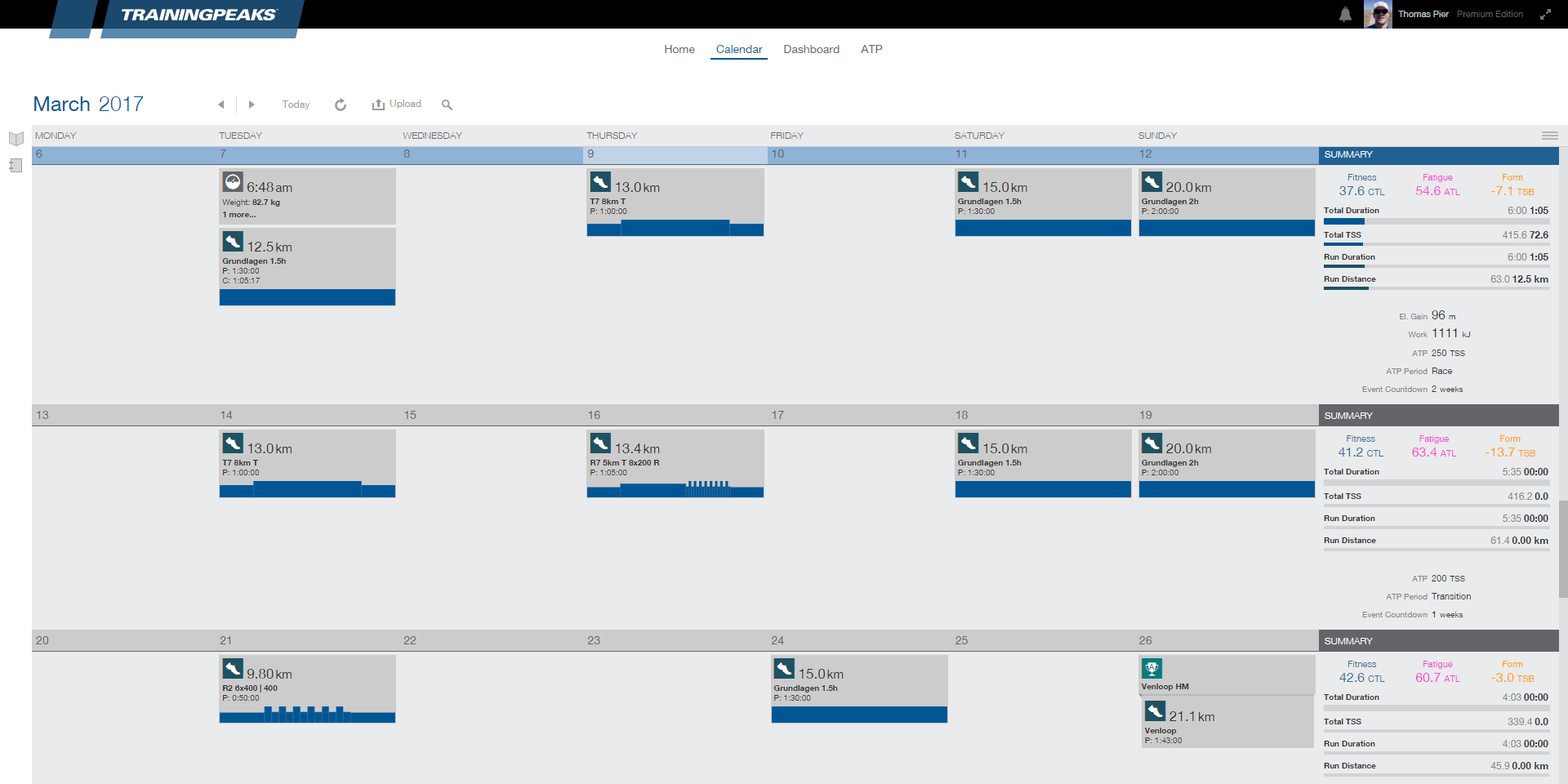
A big advantage of the Premium Edition is the possibility to plan future trainings. You create a new workout in the calendar view and give it all the information necessary to define the workout. This can be just the distance or the duration, a combination of both or much more.
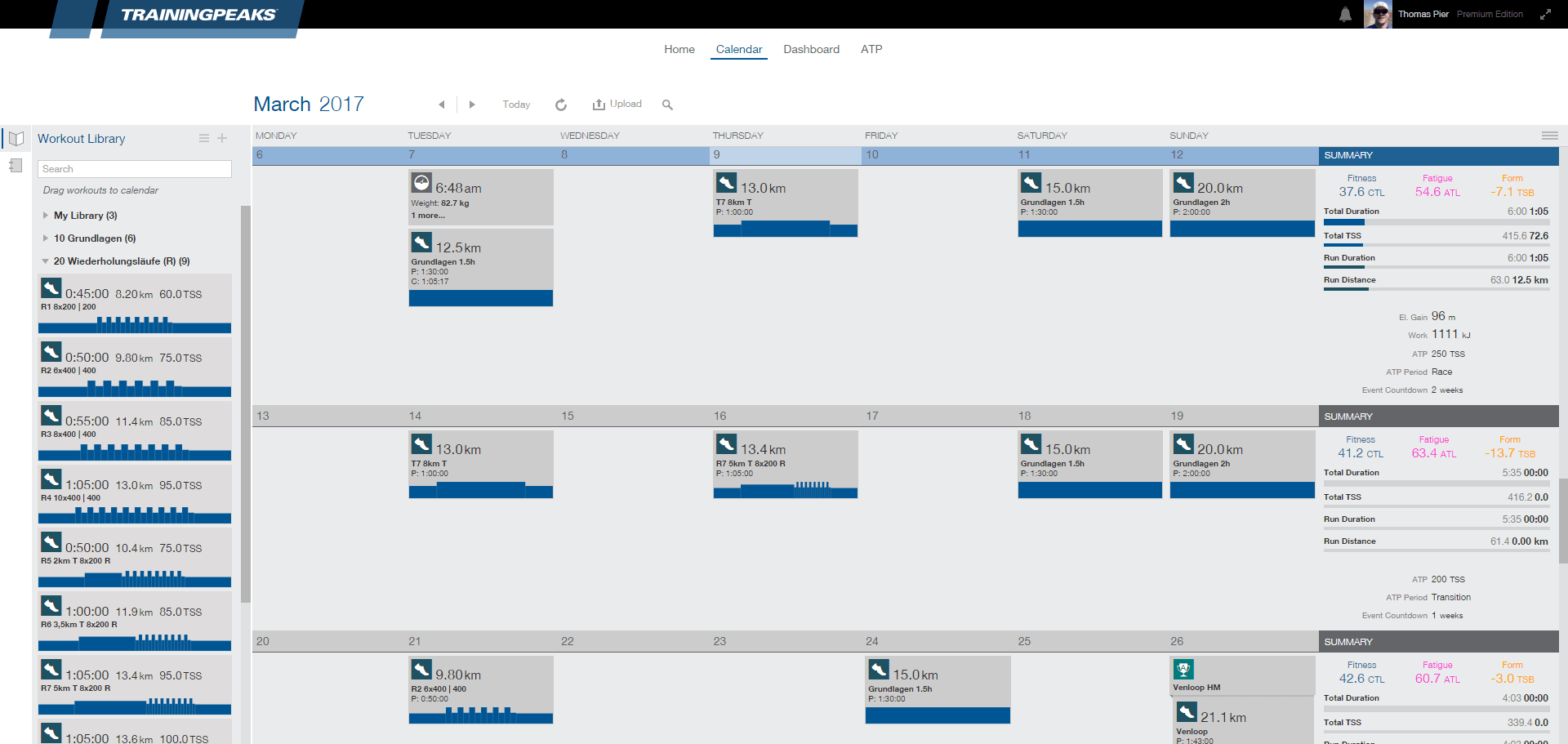
In addition to the manual input of each individual workout, you can also use a workout library, which you have ideally even loaded yourself beforehand. This way you can fill your weekly or monthly schedule very quickly via drag & drop and always fall back on proven standards.
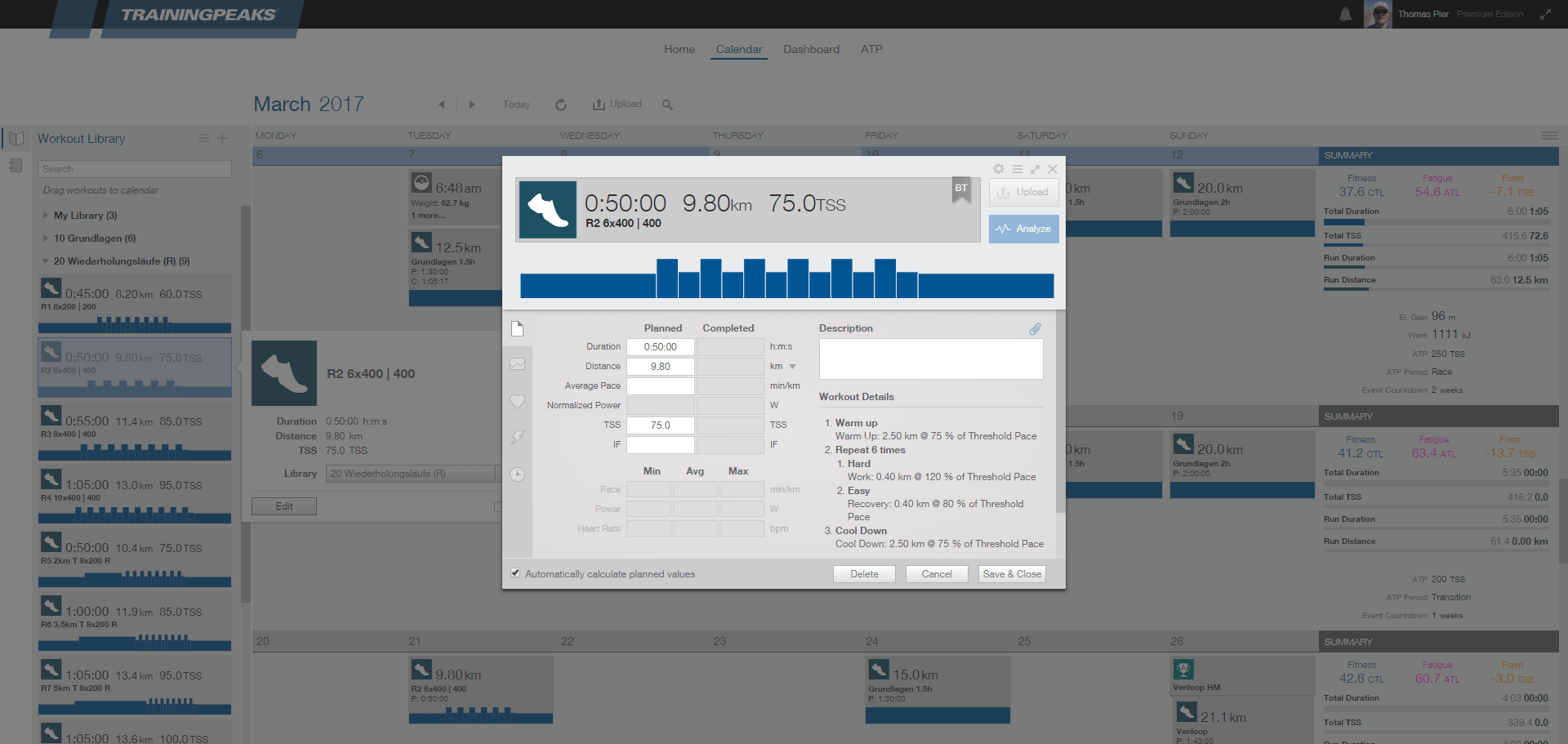
TrainingPeaks offers a whole new way to create training sessions with the Workout Builder. Here you drag blocks like “warm-up”, “pace” or “interval” into the workout and create the desired sequence in no time at all.
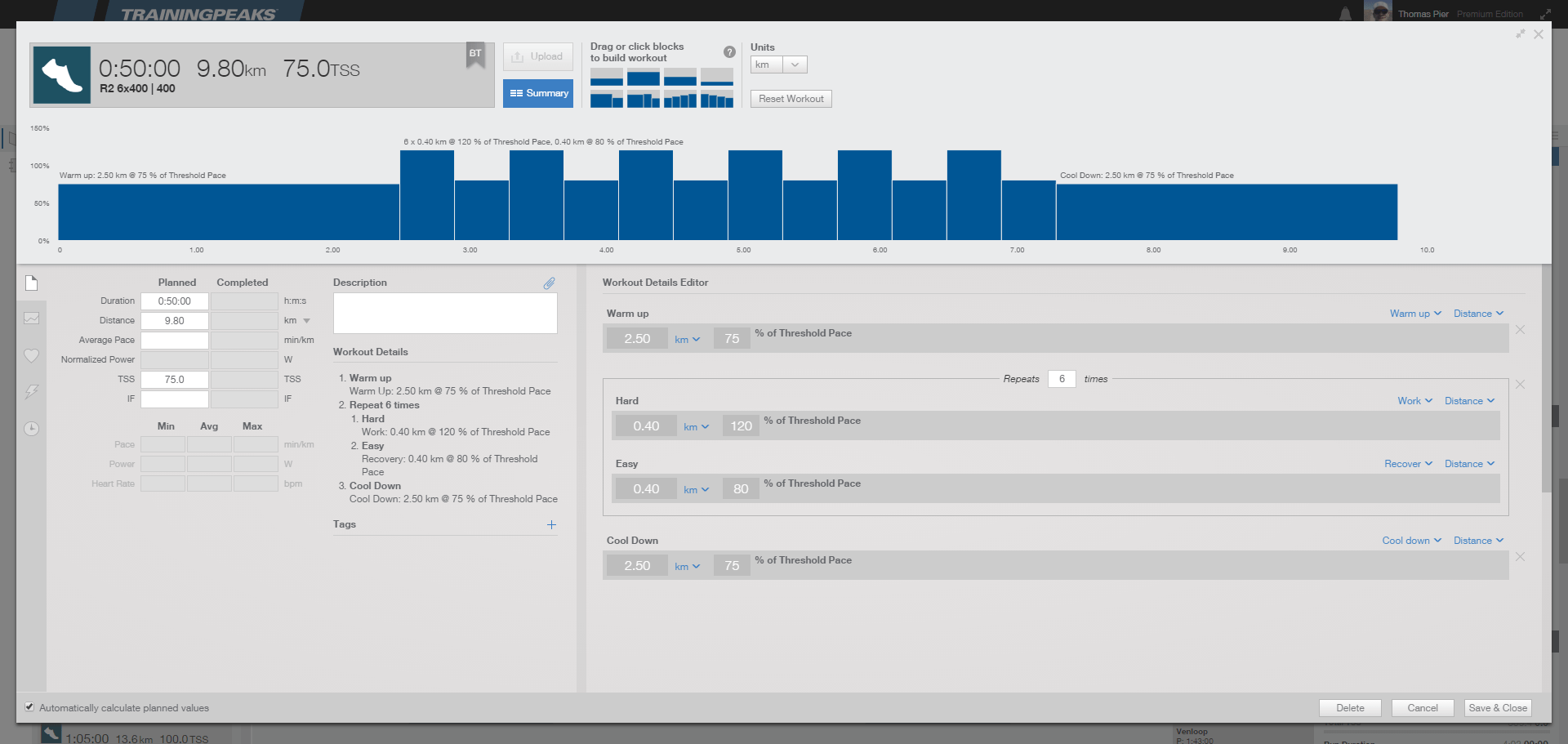
The pace settings always refer to a percentage of the threshold pace, i.e. the speed at the anaerobic threshold. This is of course stored in the runner’s personal profile, just like the heart rate zones. Why not work directly with speeds? You can of course do that, but the workout template will not adapt to your training progress. “120% of Threshold-Pace” could be 4:00 min/km right now and maybe 3:50 min/km in half a year. Due to the percentage approach, the workout is still up-to-date and doesn’t need to be adjusted.
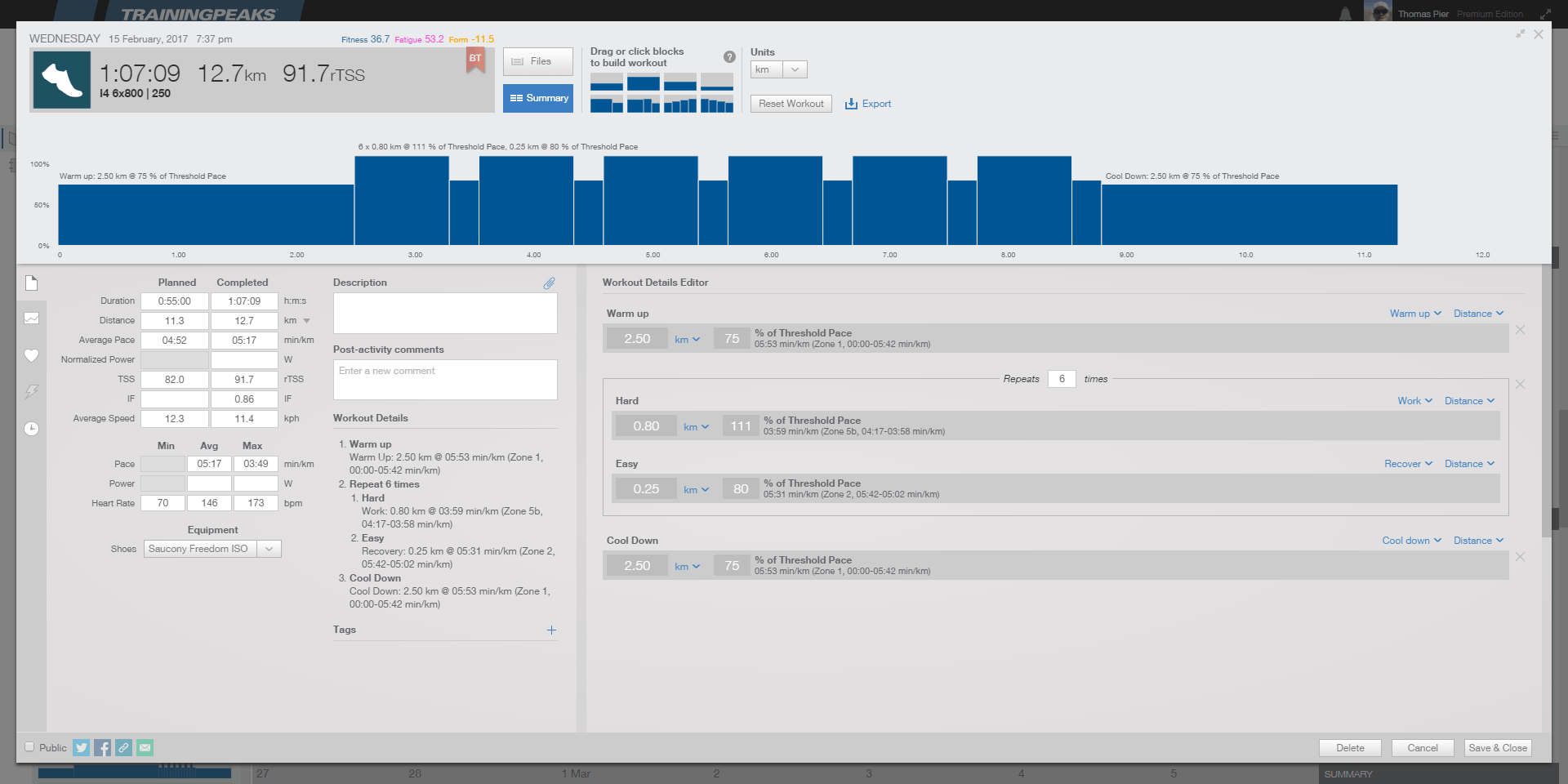
TrainingPeaks automatically calculates the actual pace as soon as the workout is dragged into the calendar. As a small highlight, you can download this preset as a FIT file and use it directly with your Garmin watch, for example. I do this very regularly, especially for intervals, but also for pace runs and find it extremely practical. If you connect your accounts, the TrainingPeaks sessions are now automatically added to the Garmin calendar.
Another new feature is the possibility to compare the planned workout with the actual data by using an overlay. This way you can see directly how well you were able to stick to the targets.
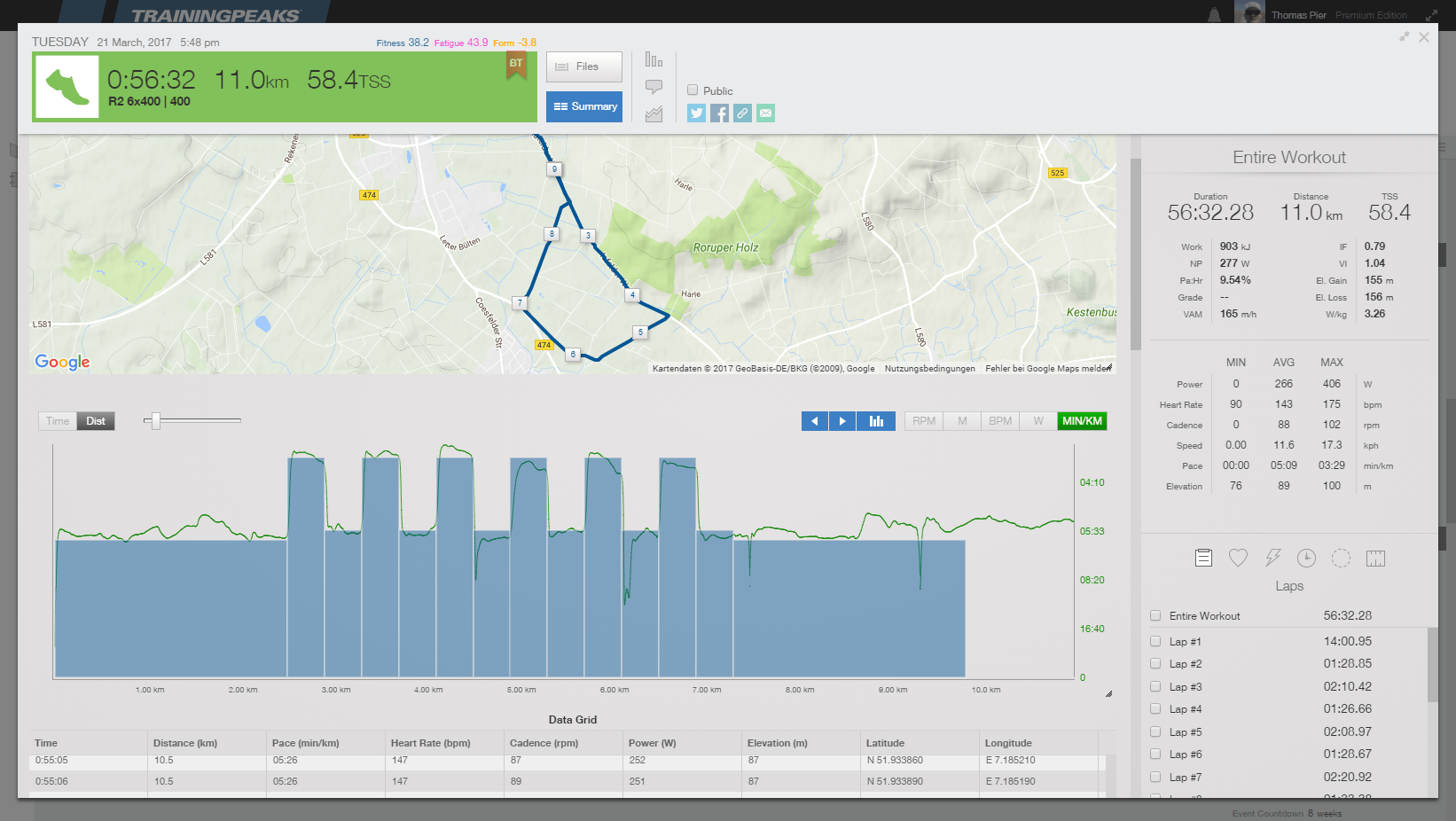
In addition to these very specialized options for training planning, the Premium version also offers significantly enhanced basic functions. For example, the dashboard shows a large selection of charts that provide information about the training load or its distribution over heart rate or pace ranges. Some of the charts – such as the Performance Management Chart PMC – are really informative and bring a significant advantage.

TrainingPeaks Training plans
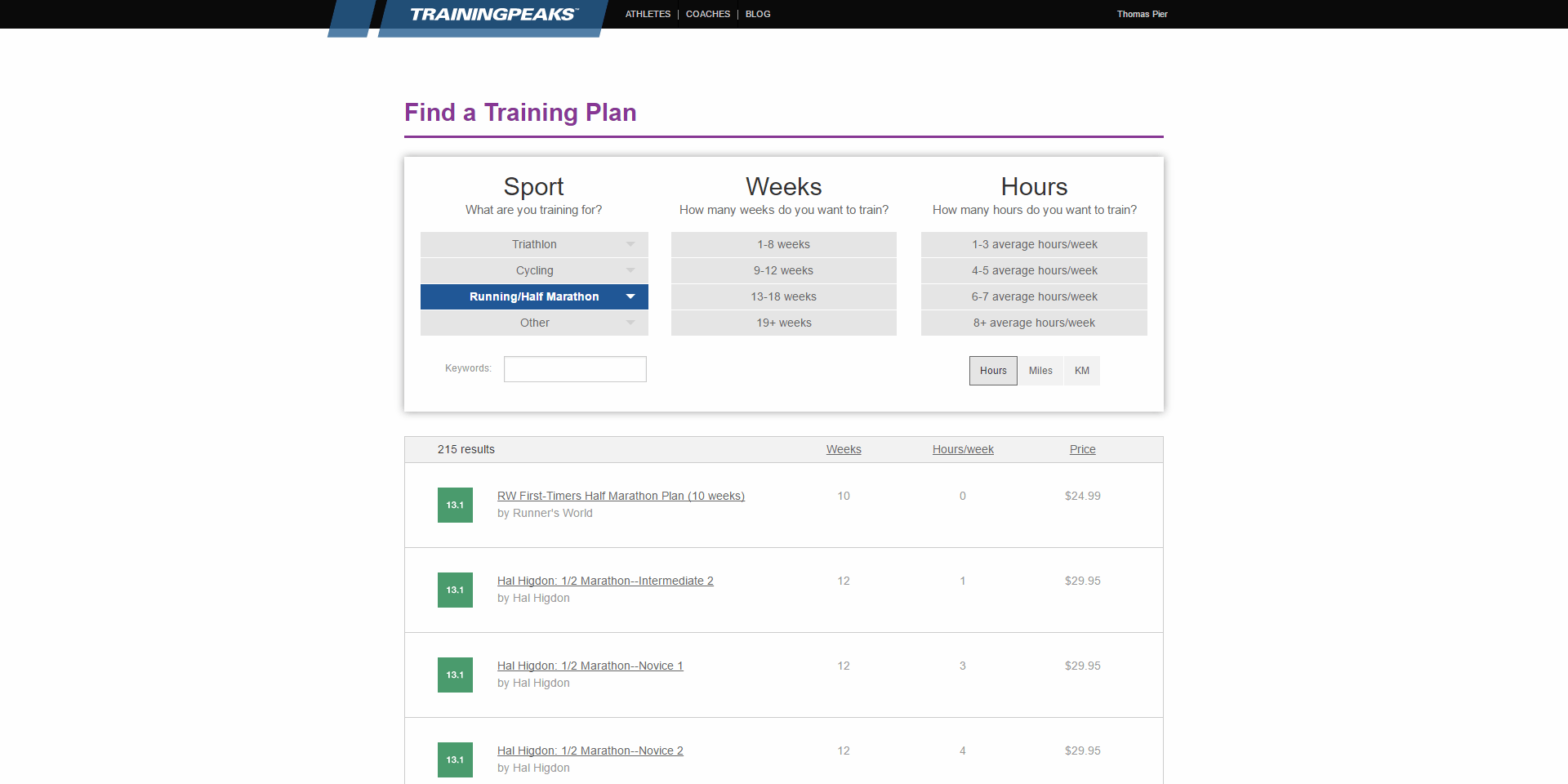
Those who do not want to coach themselves can find a trainer at TrainingPeaks (like Michael Arend, for example) or buy a ready-made training plan. This will then be transferred to the TrainingPeaks calendar with all the necessary information about the individual training sessions and can then be processed. But I haven’t tried that myself yet.
In the case of supervision by a trainer, the whole process is naturally “interactive”. The trainer specifies individually planned training sessions, can check the implementation at any time and, if necessary, adapt further sessions to the real development.
Annual planning
A relatively new, powerful function is the Annual Training Plan ATP. This is done almost entirely automatically. The basis is the input of the training volume (for example as average hours per week) and the specification and prioritization of the competitions.
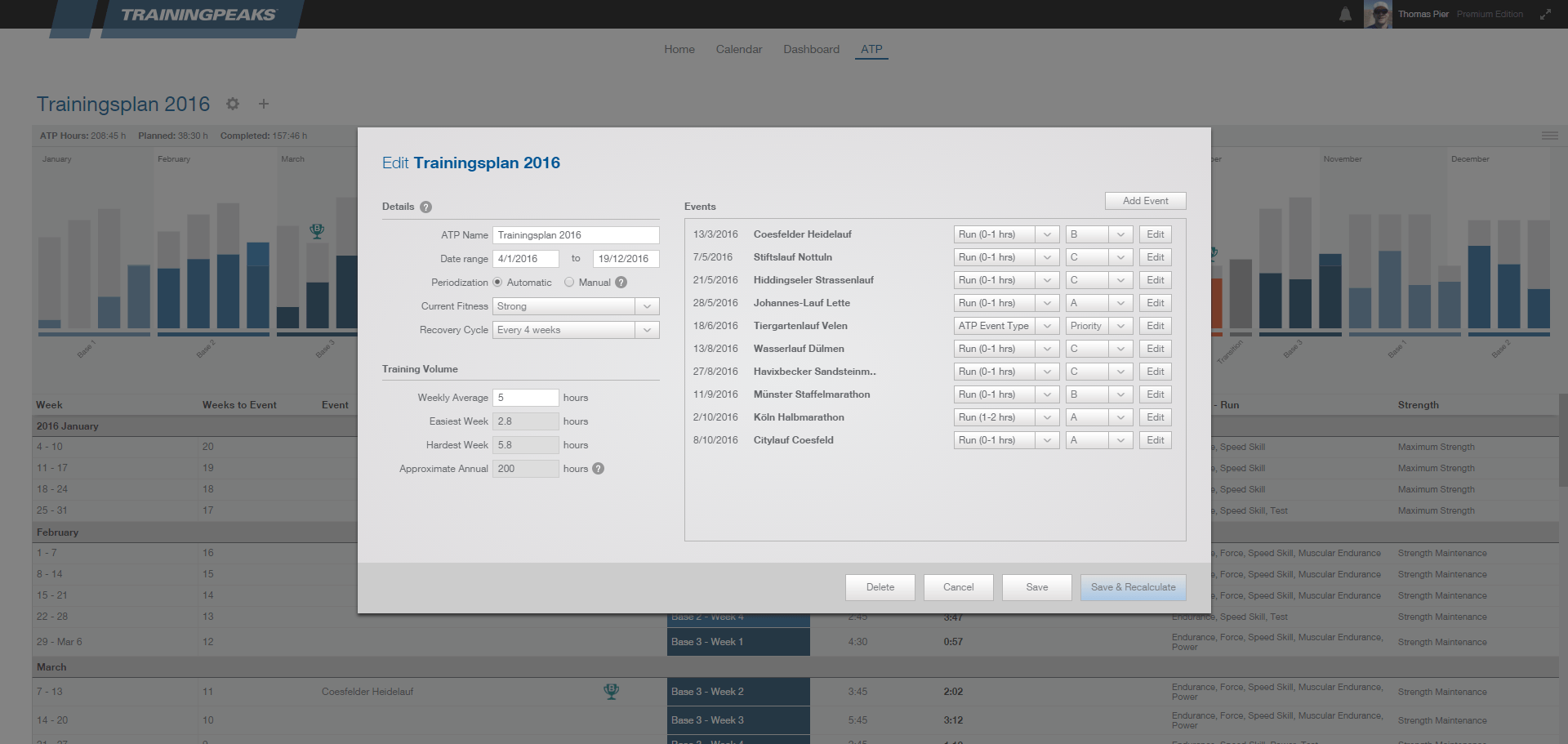
According to the system of Joe Friel, TrainingPeaks then determines macro and meso cycles with the corresponding training volume. Of course, this does not yet lead to an executable training plan, but it gives a good orientation – especially since the focus of the cycles is given and further information about the underlying system can be found easily (my recommendation: “Triahtletes Training Bible“*).
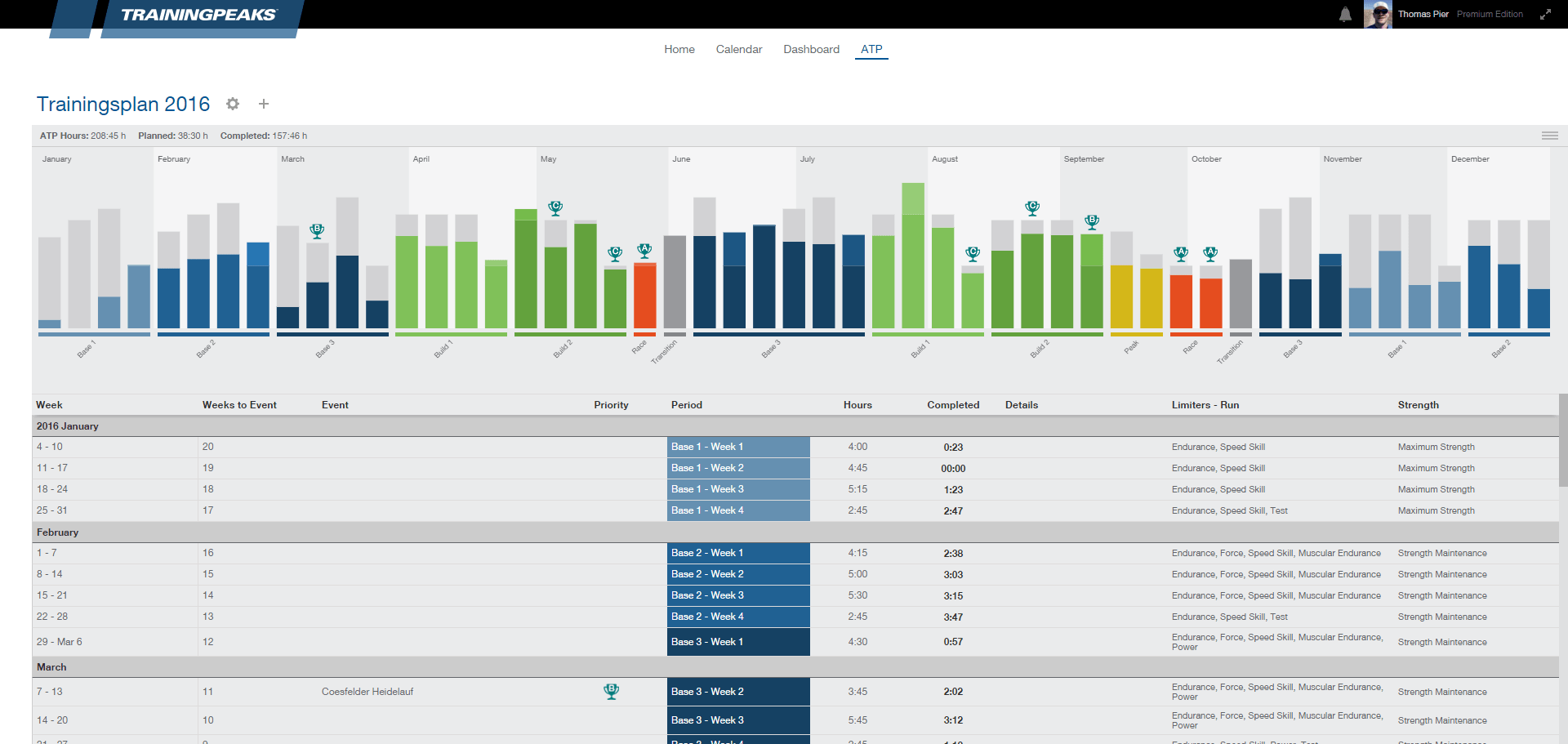
In the calendar view, the planned values can be viewed and are compared to the actual weekly schedule. When filling the training week, you can see immediately whether this corresponds to the annual planning.

However, the weekly hours as a basis for annual planning are only suitable to a limited extent. TrainingPeaks is actually based on the Training Stress Score TSS, which takes into account not only the duration of the load, but also the intensity (more on this later). Accordingly, the annual training plan can (and should) be developed according to an annual or average weekly TSS.
The automatically planned cycles can be changed afterwards. However, if you do not want to follow Joe Friel but another system, you can also create the cycles manually.

Analysis

As already mentioned, TrainingPeaks is the right platform for data junkies ;) Some metrics are not necessarily understandable at first sight. It took me quite some time to understand even half of the information in the analysis window. But it’s definitely worth working into it. Here are some terms and definitions.
Workouts
The premium version also offers a variety of graphical evaluations for each training unit. The time-based distribution to heart rate or pace zones is also a standard feature of other platforms. Furthermore, the peak charts give information about e.g. the maximum speed which could be maintained for 5 seconds, 2 minutes or half an hour.
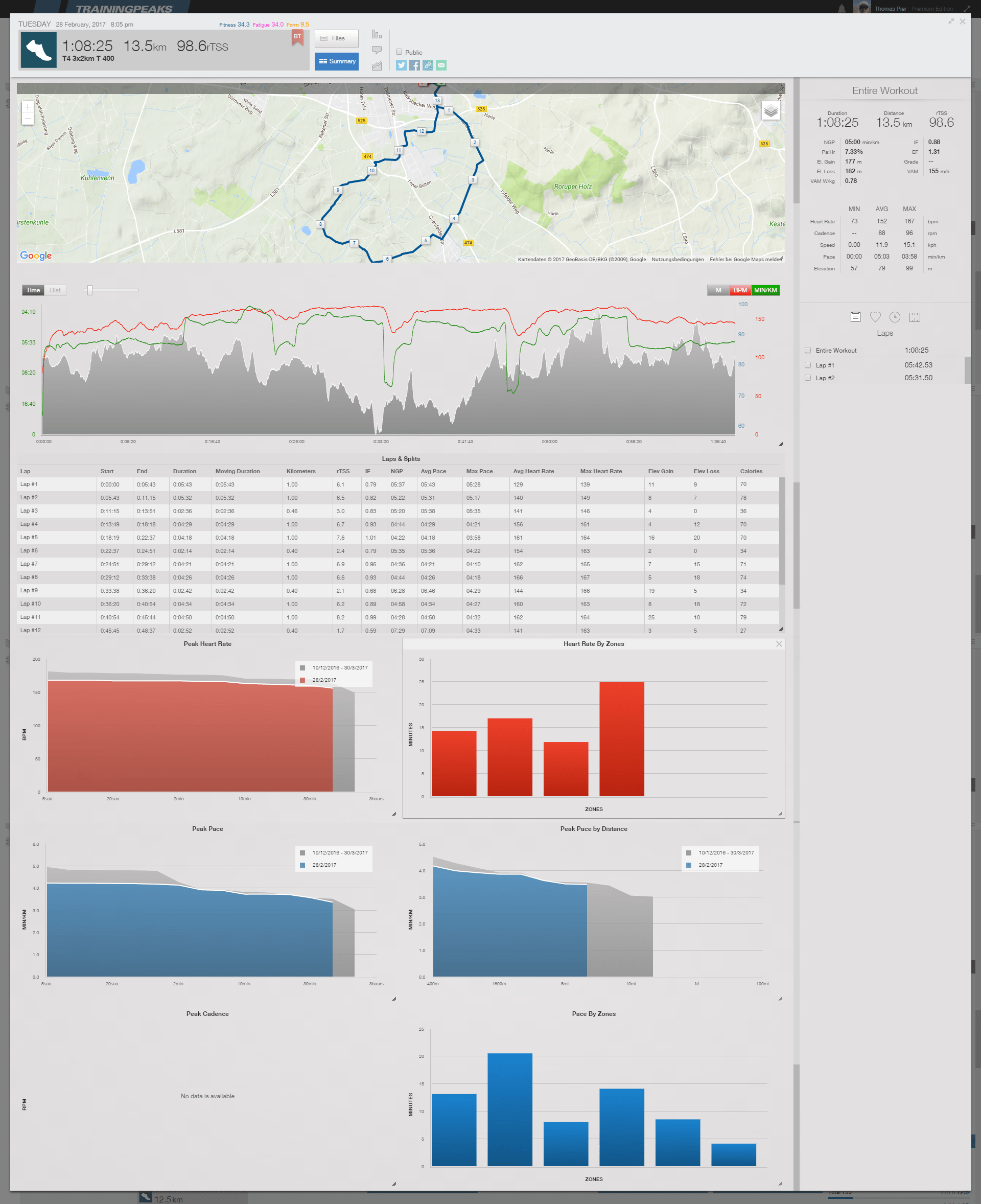
However, I don’t find these charts particularly exciting. I like to take a look at them, but I don’t see any reason to pay for them.
Performance Management Chart
The situation is quite different with the PMC. For me this is the heart of the analysis possibilities – not only for TrainingPeaks, but also for the extended analysis in WKO. The chart provides information about the current training load, recovery and fitness level. To do this, however, you have to understand the underlying metrics again.

Especially via the TSB the tapering can be planned and controlled very well before a competition. I know, for example, that I have always run my best times so far when the TSB was slightly positive the day before (about 5) and I had a higher load a week before. So now I can plan my training so that I can create exactly these conditions before the next competition.
You could also easily identify, if your plannend training load is not high enough. Looking back on last year, I was able to observe this very well, because I did not increase the training load after the first highlight of the season and thus remained at TSB values in the “grey area”. Accordingly, the next competitions were not as great.
Conclusion
I make extensive use of the possibility to plan my training in a structured way. The transfer of workouts to Garmin watches is simply ingenious and saves double work (which I had before).
All in all, TrainingPeaks is a very well thought-out platform that is constantly being developed and improved.
If you don’t want to spend money, Runalyze is just as good for you – at least when it comes to evaluating the runs. Not without reason I continue to feed this tool regularly.
